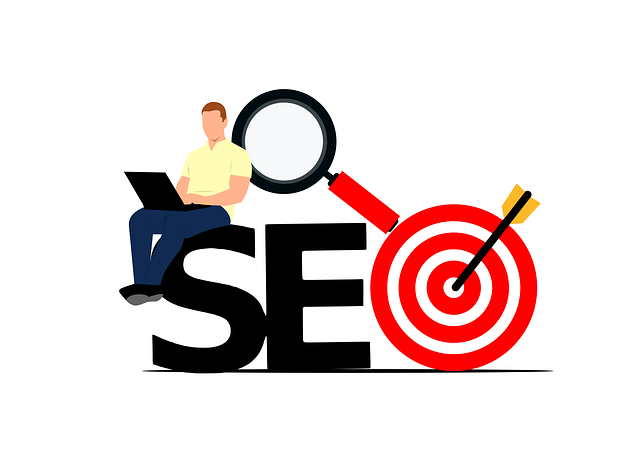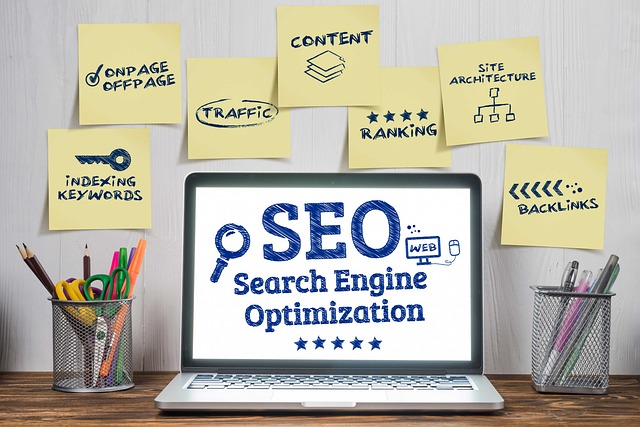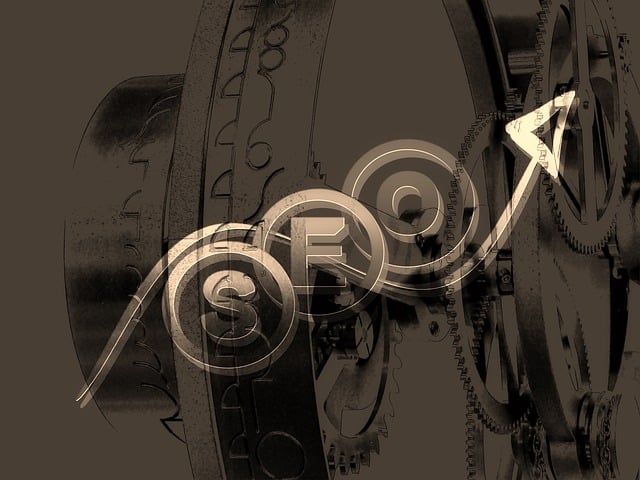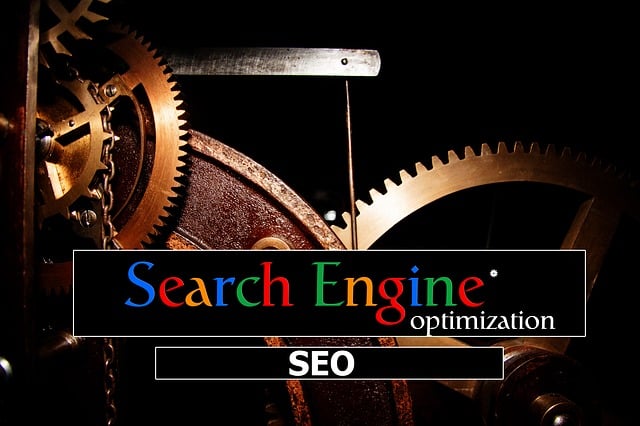TL;DR:
Understanding On-Page SEO is crucial for digital success, focusing on optimizing web pages to rank higher in search results through keyword research, content enhancement, and meta tag optimization. Key practices include:
– Keyword Research: Using tools like Google Keyword Planner and SEMrush to identify high-volume, low-competition keywords (long-tail queries) for targeted traffic.
– Title Tags & Meta Descriptions: Crafting compelling titles (under 60 characters) and descriptive meta descriptions (160-character limit) for better click-through rates (CTR).
– Content Optimization: Creating valuable, engaging content with strategic keyword placement, readability, and scannable formatting.
– Header Tags: Structuring content with `<h1>` for main topics and `<h2>` for subheadings to guide users and search engines.
– URL Optimization: Crafting simple, descriptive URLs (under 60 characters) for better discoverability and user experience.
– Image SEO: Optimizing visual content with descriptive file names, alt tags, and captions for improved indexing.
– Mobile Optimization: Ensuring fast load times, minimal HTTP requests, and browser caching for a seamless mobile experience.
These strategies, integral to any SEO Online Training program, enhance user experience, increase targeted traffic, and boost online visibility.
In today’s digital landscape, effective On-Page SEO is paramount for online visibility. This comprehensive guide offers invaluable insights into mastering crucial SEO elements through interactive online training. From understanding the foundational concepts of on-page optimization to optimizing content with strategic keyword research and engaging meta descriptions, this article equips you with actionable strategies. Learn how to enhance page structure using header tags, improve URL accessibility, integrate image SEO, and ensure a seamless user experience for mobile users—all vital steps in boosting your online presence through SEO online training.
Understanding On-Page SEO: The Cornerstone of Digital Visibility

Understanding On-Page SEO is essential for any individual looking to master the art of digital visibility and online success. It serves as the cornerstone of Search Engine Optimization (SEO) strategies, focusing on optimizing individual web pages to rank higher in search engine results pages (SERPs). This involves a deep understanding of how search engines crawl, index, and rank websites, and it is where the majority of your SEO Online Training should be concentrated.
On-Page SEO encompasses various elements, from keyword research and strategic placement to enhancing content quality and meta tag optimization. By ensuring each page has relevant, well-researched keywords woven naturally into its content, you can attract a higher volume of targeted traffic. Additionally, optimizing title tags, header tags, and alt text for images improves both user experience and search engine comprehension, ultimately leading to better rankings and increased online visibility.
Keyword Research: Unlocking the Power of Relevant Terms

Keyword research is a fundamental step in any successful SEO strategy, and it’s a crucial aspect to master for anyone seeking online visibility. It involves uncovering the search terms your target audience uses when looking for products, services, or information related to your business. With the right keywords, you can ensure that your content resonates with your ideal customers, driving relevant traffic to your website.
Through SEO online training, individuals learn how to harness the power of tools like Google Keyword Planner and SEMrush to identify high-volume, low-competition keywords. These terms often represent long-tail queries, which are more specific and better indicate a user’s intent. Targeting such keywords can significantly improve your site’s ranking for niche topics, ultimately attracting a highly qualified audience.
Optimizing Title Tags: Crafting Compelling Headlines

In the realm of on-page SEO, optimizing title tags is a crucial step that often gets overlooked. Just as an intriguing headline attracts readers in a magazine or book, a compelling title tag does the same for your website content. When crafting title tags, remember that they should accurately reflect the content while incorporating relevant keywords naturally. This practice not only aids search engines in understanding your webpage’s context but also entices users to click through from search results pages.
For effective SEO online training, focus on creating titles that are both informative and engaging. Keep them concise yet descriptive, typically under 60 characters, to ensure they display fully in search results. Avoid stuffy language or repetitive keywords; instead, aim for a headline that stands out as a valuable source of information. This strategy can significantly impact your website’s click-through rate (CTR), a metric that search engines consider when ranking web pages.
Meta Descriptions: The Art of Persuading Searchers

Meta descriptions are a powerful tool in your SEO online training arsenal, serving as a brief summary that appears below every search result link. Crafting compelling meta descriptions is an art that can significantly impact your site’s click-through rate (CTR). The ideal meta description persuades searchers that clicking through to your page will fulfill their information or service needs.
Think of it as a 160-character (or less) sales pitch. You want to capture attention, convey value, and inspire users to take action. This involves understanding user intent behind their search queries and aligning your meta content with their expectations. By doing so, you can nudge them towards clicking, driving more traffic to your site, and ultimately boosting your online visibility.
Content Optimization: Strategies for Engaging and Informative Text

In the realm of on-page SEO, content optimization is a key strategy that can significantly enhance your website’s visibility and rankings in search engine results. When it comes to creating engaging and informative text, the focus should be on providing value to your audience while incorporating relevant keywords naturally. Through comprehensive SEO online training, you learn the art of balancing readability and keyword density. Start by conducting thorough keyword research to identify terms and phrases your target audience is searching for. Once identified, these keywords should be strategically placed throughout your content, including titles, headings, and the main body text.
Effective content optimization goes beyond just keyword placement. It involves crafting compelling narratives that keep readers engaged while subtly weaving in SEO best practices. Ensure your writing style is clear, concise, and accessible to your intended audience. Incorporate subheadings, bullet points, and short paragraphs to break up text and make it more scannable. This not only aids reader comprehension but also signals to search engines the organization and relevance of your content. Remember, engaging content that provides real value will likely resonate with your audience and encourage them to explore other parts of your website, ultimately boosting your site’s overall authority and performance in SEO rankings.
Header Tags (H1, H2, etc.): Structuring Your Content Hierarchically

Header Tags (H1, H2, etc.) play a crucial role in structuring your content hierarchically, which is an essential aspect of effective SEO online training. The `
` tag should represent the main topic or heading of your page, typically placed at the top of the content. This helps search engines and users understand the core subject matter immediately. Subheadings like `
`, `
`, and so on, should be used to organize your content logically, breaking it down into manageable sections. This hierarchical structure not only enhances readability but also guides both users and search engine crawlers through the page’s content.
`, and so on, should be used to organize your content logically, breaking it down into manageable sections. This hierarchical structure not only enhances readability but also guides both users and search engine crawlers through the page’s content.
Proper use of header tags ensures that your online SEO training materials are accessible and meaningful. Each heading should convey a clear and concise idea, making it easier for readers to scan and understand the information. Additionally, these tags help in distributing link equity throughout your webpage, which is vital for improving overall search engine rankings.
URL Optimization: Making Your Pages Easily Accessible

URL optimization is a crucial aspect of on-page SEO that often goes overlooked. When crafting URLs for your web pages, keep them simple, descriptive, and keyword-rich. A well-optimized URL not only improves user experience but also acts as a clear signal to search engines about the page’s content. Think of it as an online map that helps both users and search algorithms navigate your site effortlessly.
In an era where information is just a click away, ensuring your URLs are easily accessible and readable is vital for effective SEO. This involves using relevant keywords naturally, keeping them under 60 characters, and structuring them hierarchically. For instance, instead of a jumbled string of numbers or random words, consider using descriptive terms that reflect the page’s content. This not only enhances discoverability but also contributes to better rankings in search results, especially when combined with quality content and other SEO best practices from your online training.
Image SEO: Enhancing Visuals for Better Indexing

In the realm of on-page SEO, Image SEO plays a pivotal role in enhancing visual content for better indexing by search engines. When optimizing images, start by incorporating descriptive file names and alt tags that accurately reflect the image’s content. These tags serve as a bridge between visuals and text, providing search engines with crucial context for accurate indexing. Additionally, leveraging relevant keywords within these tags can significantly boost your SEO online training efforts, ensuring your visual assets contribute to your website’s overall search engine rankings.
Further optimization techniques include compressing images to reduce file sizes without compromising quality, as faster loading times are favored by both users and search engines. Utilizing descriptive and unique image captions and incorporating them within your HTML code also enhances accessibility and semantic understanding for search algorithms. Remember, the goal is not only to attract viewers but also to provide a comprehensive experience that includes effective Image SEO practices for improved online visibility.
Mobile-Friendliness and Page Speed: Ensuring a Positive User Experience

In today’s digital era, mobile-friendliness and page speed are crucial components of any successful SEO online training regimen. With a vast majority of internet users accessing websites through their smartphones and tablets, ensuring your pages load quickly and display optimally on all devices is essential for a positive user experience. Google, too, favors mobile-friendly sites in its search rankings, making this an indispensable aspect of On-Page SEO.
Optimizing for speed involves compressing images, leveraging browser caching, minimizing HTTP requests, and using content delivery networks (CDNs). These strategies not only enhance page load times but also improve user engagement by reducing bounce rates. Remember that a seamless mobile experience isn’t just about performance; it’s about delivering content in a way that’s intuitive and easy to navigate, thereby encouraging visitors to explore more of your site.
